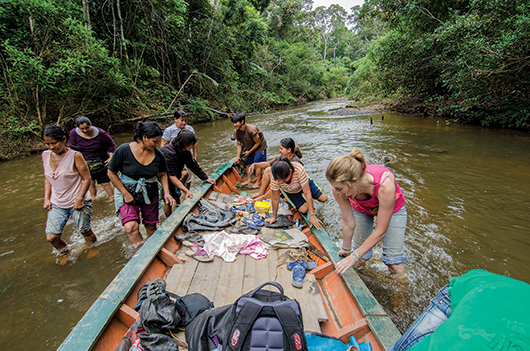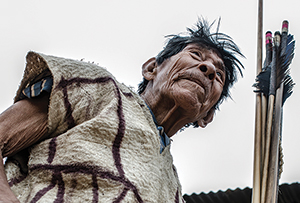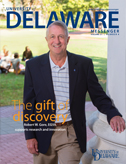
Photographer documents a way of life
ALUMNI | As the elders of a small hunter-gatherer community told the story of how their people came to be, UD alumnus and faculty member Jon Cox and student Sarah Driver sat and listened, intrigued by the tale.
Over the course of seven days last summer, they learned firsthand about the Ese’eja (ess-a-eha) Nation, a community of three distinct villages living in the remote areas of Infierno, Palma Real and Sonene, Peru.

Cox, AG98, a photographer and an assistant professor of art who recently completed a widely acclaimed “cultural mapping project” to document and preserve the Hadza hunter gatherers of Tanzania, now sought to work with the indigenous Peruvian community, which had already, independently, begun a similar project.
“They are really taking the initiative to tell not only their children and their grandchildren but the world about the story of the Ese’eja people and how they live sustainably within the forest around the Amazon basin,” Cox says. “Our job is just to help them be their voice, not just in Peru but internationally.”
During the weeklong trip, he and Driver traveled through the Amazon rainforest, slept in one-room huts and spoke to the people about their history and way of life.
Driver, an anthropology and visual communications double major and a 2013 Summer Scholar, says she found the way of life intriguing and enlightening.
“It was so eye-opening seeing how people who basically have one room to live in can be utterly happy,” she says. “Instead of their house being their home, everything around them in nature is their home, and it was really good to see that such a different way of life can work.”
In addition to the community’s simple lifestyle, Cox says he believes the Ese’eja people’s ability to live sustainably is important to document, especially when the knowledge won’t necessarily be passed on after the elders die.
“This particular group of people live a unique way of life that we’ve forgotten, and to hold that knowledge that has been passed on for thousands of years is something important to share with the world,” he says. “Moreover, there’s so much that we as a Westernized society can take away from how these hunter gatherers live and how they interact with their environment.”
The Ese’eja Nation is writing letters of support for a variety of grants to fund their independent cultural documentation project. If funded, Cox will return to Peru in May to further document the community.
Like his project in Tanzania, he plans to release a hardback book and also include a short film of the Ese’eja. In addition, Cox says he hopes more students can take part in the project and gain a deeper appreciation for the power and value of art.
“It’s important to show students what we as artists can do to promote social change, or environmental change, or bring about awareness to some cause that needs attention,” he says. “Art isn’t just about hanging something on the wall; it’s about making a difference in your community.”
Article by Collette L. O’Neal, AS15






